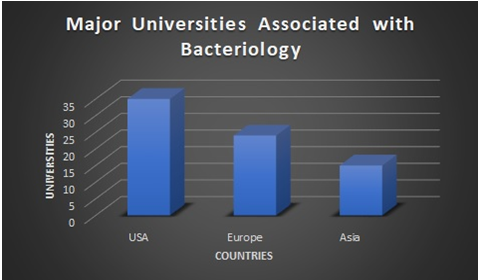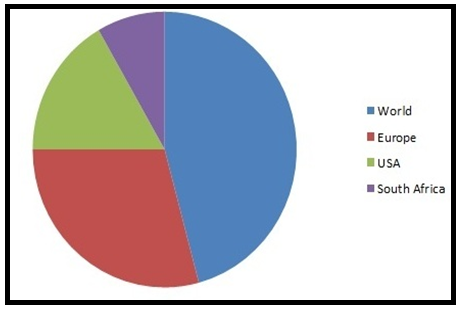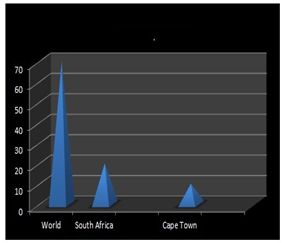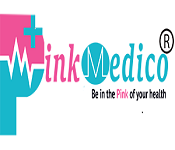
Meet top and best bacteriologists, microbiologists, scientists, researchers, virologists at Bacteriology conferences, infectious disease meetings, parasitology events, medical microbiology conference, virology congress in USA, UK, Europe, Asia Pacific, Middle East, Africa.
bacteriology conferences, infectious disease congress, parasitology meetings, medical microbiology conference, virology, rare diseases, vaccination, STD HIV, water pollution, journals, virologists, retrovirus, malaria infection
Theme: Acquainting and Improving Preventive Care in Bacteriology and Infectious Diseases
Infectious Conference 2018
ME Conferences invites every one of the members from everywhere throughout the world to attend 8th International Conference on Bacteriology and Infectious Diseases scheduled to be held in November 22-23, 2018 in Cape Town, South Africa which incorporates provoke keynote introductions, Oral talks, Poster introductions and Exhibitions.
Bacteriology 2018 is giving a worldwide stage to look into that bears new bits of knowledge into Microbiology, Molecular bacteriology, Clinical analytic bacteriology, Bacterial contaminations, Industrial bacteriology, Immunology and Infectious Diseases. Infectious diseases are those which are caused by microorganisms like E.coli, Salmonella, H.pylori, N.gonorrhoeae, N.meningitidis, S.aureus, and S.bacteria. It incorporates ailments like pneumonia, meningitis, gastroenteritis, urinary tract diseases. The medications used to treat such bacterial diseases are called Antibiotics. Particularly in US about $ 44.68 billion is required to reach by 2017. In the time of 2005-2011, there is a development rate of 6.6% every year. The manufacturing of anti-infection agents has expanded continuously nowadays, so worldwide interest for aminoglycoside anti-microbials is around 79%, pencillin 8%, antibiotic medications 4%, erythromycin 7%, streptomycin 1% and chloramphenicol shares around 1% in the anti-toxin advertise internationally. The consumables, equipment and technology markets in the microbiology business totaled about $7.7 billion out of 2012. This aggregate is relied upon to develop from $8.5 billion out of 2013 to $11.4 billion out of 2018, with a compound yearly development rate (CAGR) of 6.1% for the five-year time frame, 2013 to 2018.
Track 1: Bacteriology and Infectious Diseases
Bacteriology and Infectious Diseases rely upon examination of Bacterial Ecology, Bacterial Infection, Pathogenic Bacteria, Bacterial toxins, Bacterial genomics, , Salmonella, Bacterial Diseases, immunology, bacteriology, mycology, virology, parasitology, Parasitic Worms, Anthrax, Biological weapons, Leprosy, pathology, and pathophysiology of the causative specialists of infectious diseases. It likewise serve to give bits of knowledge into until now unexplored domains of clinical microbiology and infectious diseases, for example, improvement of multi-medicate protection (MDR), advancement of novel antibodies and anti-toxins to neutralize the impacts of MDR, variety of contamination and illness dissemination mapping. It also provides novel discoveries on the ecology, biochemistry and genetics of pathogenic bacteria, viruses, fungus and other infectious parasites. Contemporary findings pertaining to the development of highly advanced diagnostic and therapeutic methods against infectious diseases viz. malaria, influenza, tuberculosis, leprosy, whooping cough, polio, Hepatitis-A, HIV/AIDS.
Track 2: Bacterial Pathogenesis and Virulence
Bacterial pathogenesis of some chronic human contaminations is now widely accepted. Be that as it may, the criteria used to decide if a given disease is caused by Biofilms stay vague. 3 contaminations that are caused by biofilms—infectious kidney stones, bacterial endocarditis, and cystic fibrosis lung diseases—and concentrate on the part of the biofilm in ailment pathogenesis. The pathogenesis of numerous bacterial diseases can't be isolated from the host invulnerable reaction, for a significant part of the tissue harm is caused by the host reaction as opposed to by bacterial elements. Biofilms are also important as environmental reservoirs for pathogens, and the biofilm growth mode may provide organisms with survival advantages in natural environments and increase their virulence. Bacterial virulence proteins that are vital for plant illness improvement have remained obscure. Rotaviruses are the main source of serious gastroenteritis in babies and youthful offspring of <5 years old worldwide and they are the reason for roughly a large portion of a million deaths every year. The level of virulence is connected specifically to the capacity of the living being to cause ailment regardless of host protection components. It is influenced by various factors, for example, the number of infecting bacteria, course of passage into the body, particular and nonspecific host guard systems, and virulence factors of the bacterium. Virulence can be measured experimentally by determining the quantity of microscopic organisms required to causing animal death, sickness, or injuries in a characterized period after the microorganisms are regulated by a designated.
Track 3: Bacterial Biochemistry
Bacteria is made up of three domains of life .Unlike eukaryotes, bacteria has nucleoids instead of nuclei. The bacterial cell wall is made up of peptidoglycan. And it is found in tissue of other organisms, soils, or water surfaces. It has specific structural characteristics including a cell envelope, ribosomes, nucleoid, pili, and flagella. It is also used to produce food, such as yoghurt. Bacteria is also used in the fields of biotechnology and gene therapy due to their possession of circular DNA called plasmids, in which it contain the genes that encode antibiotic resistance. The basic and metabolic highlights about some of these are obscure. In spite of the fact that a few individuals from area microbes live in extraordinary situations, numerous more supports in direct conditions. Numerous microscopic organisms frame cooperative relationship with eukaryotes and are in this way of worry in medication and agriculture. Proteobacteria and cyanobacteria are the most essential phyla in worldwide biology and human issues. The cell divider in microbes fills in as a physical boundary between the cell and its environment. The inflexibility of the cell well is because of Peptidoglycan is exceptional to the cell dividers of microorganisms, as eukaryotic cell dividers are for the most part made of chiten or cellulose ,and archaea bacteria have cell walls composed of other polysaccharides and proteins. And the cell wall of bacteria contains 2 categorie; Gram-positive and Gram-negative, named after the gram strain test.
Track 4: Medical Microbiology and Immunology
Medical microbiology is the relationship between infectious agents and their hosts. It also deals with the prevention, diagnosis and treatment of infectious diseases caused by various infectious agents. According to the type of pathogens and their modes of transmission into the host body, a treatment can be implied. Microbiology has various applications in different fields like medicine, agriculture, industry, pollution control etc. Medical Microbiology and Immunology ”consider a wide range of studies in this area, ranging from Immunotherapy, Immunosuppression, Immunologic Memory, Immunologic Factors, Antiprotozoal Agents, Food Microbiology, Milk and Meat Microbiology Antibiotic resistance, anaerobic microbiology. Immunology is the branch of biomedical science that encloses the study of structure and function of the immune system in all organisms. Immunology includes all physical, chemical and biological reactions of the organism against the foreign substances. Immunome Research presents emerging fields of immunology such as immunomics, computational vaccinology and genomics application. Immune system plays the most important role in understanding the diseases and also protects us from infections. Immune system is divided into two types: innate immunity and adaptive immunity.
Track 5: Bacterial Genetics
Bacterial genetics is the subfield of hereditary qualities dedicated to the investigation of microorganisms. They are subtly not the same as eukaryotic genetics. Transformation in bacteria was first seen in 1928 by F. Grffith and later (in 1944) inspected at the sub-atomic level by O. Avery and his associates who utilized the procedure to exhibit that DNA was the hereditary material of microscopic organisms .In change, a cell takes up superfluous DNA found in the earth and joins it into its genome (hereditary material) through recombination. Not all microscopic organisms are able to be changed, and not all extracellular DNA is able to change.To be competent to transform, the extracellular DNA must be double-stranded and relatively large. Transformation is detected by an alternation in the behaviour and characteristics (phenotype) of the recipient bacteria. Transduction the DNA is brought into the beneficiary cell by non deadly infection (phage) that has developed on the benefactor cell. Conjugation includes the genuine contact amongst giver and beneficiary cell amid which DNA is exchanged as a piece of a plasmid. Plasmids are the hereditary qualities components most much of the time changed by conjugation.
Track 6: Microbial Genomics
During early history 11 oldness, genomics and germal genomics primarily based approaches know had absolute alter the sector of microbiology and our figuring out of microbial likes. Generally they're minor and fewer modification in width by all of lot compared to genomes of animals and sole cellular phone eukaryotes. Right now, we allow genome sequences starting with 50 the several bacilli phyla and 11 the several archaeal phyla. The genome sequences disclose a lot diversification in pathogens. Analysis of more 2000 Escherichia coli genomes exposes an E. coli root genome of almost 3100 heredity families along with all of around 89,000 the various chromosome families. According to the World Health Organization greater than 1 total folks take a sexually transmitted infections(STI) daily and also a predicted 500 thousand other folks grow to be ill amidst Chlamydia, gonorrhoea, venereal disease or trichomoniasis per annum. They were urbane introducing affect bottlenecks and burgeoning cellular telephones in going on trip to cut back RNA deliver as a way to cut back setting of endosymbiotic microbes. This reduces Genome size rapidly and can speed up the process of bacterial genome compaction.
Track 7: Epidemiology and Emerging Diseases
Epidemiology is the study and analysis of the distribution and determinants of health and disease conditions in defined populations. Epidemiological study include disease causation, transmission, outbreak investigation, disease surveillance, forensic epidemiology, Occupational epidemiology, screening, biomonitoring, and comparisons of treatment effects such as in clinical trials. and Applied epidemiology is the practice of using epidemiological methods to protect or improve the health of a population. Emerging diseases are the infectious disease whose frequency has increased in the previous 20 years and could increase sooner rather than later. Emerging infectious disease are caused by recently identified species or strains (e.g. Extreme intense respiratory disorder) that may have advanced from a known contamination (e.g. flu) or spread to another population (e.g. West Nile fever) . Many organisms live in our bodies which are ordinarily harmless, however under specific conditions, a few living beings may cause infection. Some bacterial infections can be passed from individual to individual called ecologic change. Neisseria is a vast class of microorganisms that colonize the mucosal surfaces of many animals. Of the 11 species that colonize people, just two are pathogens, N. meningitis and N. gonorrhea.
Track 8: Zoonotic Diseases
Zoonoses are infectious diseases of animals that can normally be transmitted to people. They runs from minor here and now ailment to a major life changing illness. Certain ones can even cause death. For example, Ebola infection malady and salmonellosis are zoonoses. Zoonoses malady is caused by the pathogens like infections, microscopic organisms, growths and parasites. In any case only diseases that routinely include animal to human transmission, similar to rabies, are viewed as direct zoonosis. Zoonotic transmission can happen in any context in which there is companionistic (pets), financial (cultivating, and so on.) ruthless (chasing, butchering or devouring wild diversion) or research contact with or utilization of animals, animal products, or animal derivatives (vaccines) They also caused by contaminations of food include eggs, seafood, meat, dairy, and even some vegetables. Symptoms includes diarrhoea, muscle aches, and fever. Treatment includes periodic testing for enteric parasites or other pathogens, and other disease control measures in domestic animals can also protect people. Human vaccines are available for a few diseases, and arthropod control measures decrease the risk of vector borne infections. Food borne zoonoses can often be interrupted by using good sanitation and hygiene during food preparation.
Track 9: Veterinary Bacteriology
Some of these microbes are exceptionally pathogenic, their severe pathogenicity make various types and levels of contaminations to domesticated animals, pets and wild life. In veterinary bacteriology, it is imperative to recognize the idea of the microbes that cause the contamination in animals. There is a broad range of laboratory protocols, methods, and techniques that facilitate the microbiological analysis. Specimens should be obtained from infected animals.
Track 10: Neurological Infectious Disease
Viral and immune mediated disorder of the sensory system are the neurological issue. The most widely recognized neuroimmune issue is various sclerosis; and HIV is the most well-known viral contamination of the sensory system .basic to the two issue is dynamic loss of neurons resulting in significant cognitive and motor dysfunction .symptoms occur are pain ,swelling, redness, impaired function and fever .There may also be heat at the site of infected area. The most common neurologic infections are Encephalitis, HIV, Meningitis. Spinal liquid identification of human neurotropic polyomavirus (JC infection) is particular. Immunosuppression of cell– intervened type invulnerability prompts this disease, yet it is hard to characterized this immunosuppression on clinical grounds in a few patients, and the improvement of PML may come as an unexpected when an immunosuppressed state was not beforehand suspected. While there is no dependable presymptomatic approach to recognize PML or JC infection contamination of the cerebrum by virologic or imaging observation methods, one patient with numerous sclerosis and natalizumab treatment has survived, showing that withdrawal of the neutralizer, , possibly in combination with antiviral treatment, may allow survival.
Track 11: Phyto Bacteriology
It is a branch of bacteriology that deals with organisms related with or pathogenic for plants. This bacteria causes a small proportion of plant diseases. Living beings that, cause infectious disease include fungi, oomycetes, microbes, infections, viroids, infection like creatures, phytoplasmas, protozoa, nematodes and parasitic plants. Biotrophic parasitic pathogens colonize living plant tissue and acquire supplements from living host cells. Necrotrophic contagious pathogens infect and kill host tissue and extract nutrients from the dead host cells. Pathogenic tests can be done for the prevention of disease. There are 1,700 fortune associations all inclusive with more than 1200 premium investigations in a year with a good market research firm overall every year.
Track 12: Vector Borne Infectious Diseases
Vectors are life forms that can transmit infectious diseases between humans or from creatures to humans. A considerable lot of these vectors are bloodsucking creepy crawlies, which ingest ailment delivering microorganisms amid a blood meal from a infected host (human or creature) and later infuse it into another host amid their ensuing blood meal. Vector-borne diseases are diseases transmitted by the bite of contaminated arthropod species, for example, mosquitoes, ticks, triatomine bugs, sandflies, and blackflies. Globalization of movement and exchange, unplanned urbanization and natural difficulties, for example, environmental change are significantly affecting disease transmission like dengue, chikungunya and West Nile infection.Changes in agricultural practices due to variation in temperature and rainfall also affect the transmission of vector-borne diseases.
Track 13: Viriology and Infectious Diseases
Virology is the study of viruses – submicroscopic, parasitic particles of genetic material contained in a protein coat and virus-like agents. Virology is considered to be a subfield of microbiology or of medicine. Investigation of infections is the way that they cause numerous vital irresistible illnesses, among them the regular chilly, flu, rabies, measles, many types of looseness of the bowels, hepatitis, Dengue fever, yellow fever, polio, smallpox and AIDS. Herpes simplex causes mouth blisters and genital herpes and is under scrutiny as a conceivable factor in Alzheimer's. Current research in virology includes the investigation of mechanism of HIV replication and pathogenesis .Diseases such as prion diseases, Alzheimer's disease and HIV-1-associated dementia. Infectious diseases, also known as transmissible disease or communicable diseasesigns of infection affect the whole body generally, such as fatigue, loss of appetite, weight loss, fevers, night sweats, chills, aches and pains. Others are specific to individual body parts, such as skin rashes, coughing, or a runny nose. They can be prevented by wearing gowns, and wearing face masks can help prevent infections from being passed from one person to another.
Track 14: Influenza
Influenza is an infectious disease caused by an influenza virus. It is commonly known as "the flu". Usually, the virus is spread through the air from coughs or sneezes, touching surfaces contaminated by the virus and then touching the mouth or eyes. A person may be infectious to others both before and during the time they are showing symptoms. It may be confirmed by testing the throat, sputum, or nose for the virus. In immunocompromised individuals, viral shedding can proceed for longer than two weeks. Flu can be spread in three primary courses by coordinate transmission , the airborne course. Principle side effects are high fever, runny nose, sore throat, muscle torments, cerebral pain, hacking, and feeling tired. To diminish the transmission of flu incorporate great individual wellbeing and cleanliness propensities. Treatment incorporates that People with this season's cold virus are instructed to drink a lot of fluids, abstain from utilizing liquor and tobacco and, if essential, take medications such as acetaminophen to relieve the fever and muscle aches associated with the flu. Children and teenagers with flu symptoms (particularly fever) should avoid taking aspirin during an influenza infection (especially influenza type B), because doing so can lead to Reye's syndrome, a rare but potentially fatal disease of the liver.
Track 15: Inflammatory Infectious Diseases
An inflammatory disease understands the host body’s mechanism and demonstrates the final outcome of infection can be determined by the host genetic makeup of the infecting agent. The advancement in in molecular biology and medical devices modernized ability to detect very low numbers of infectious agents in specimens collected directly from the affected site. Most of the diseases caused by infectious agents can be discussed their progression with a wide spectrum of clinical manifestations and their outcomes in Infection congress 2018.
Track 16: Advances in Antimicrobials, Vaccines and Therapeutics
Vaccination is a process of administration of an antigenic material (vaccine) into a living mechanism. The clinical effect desired is to cause stimulation of an individual's immune system in order to develop an adaptive immunity against the pathogen constituting the vaccine. Vaccination is the most effective method of prevention for infectious diseases. Vaccine Adjuvants are components which potentiate the immune system and accelerate the immune responses to an antigen. Antimicrobial is the agent that kills or restricts the cell growth. To fight against the potential bacteria nowadays, the manufacturing companies are coming up with more advanced antimicrobial liquids/soaps/sanitizers. Immunization/Vaccination is one of the most cost-effective public health interventions to date, saving millions of lives1 and protecting countless children from illness and disability.
Track 17: Diagnosis of Infectious Diseases
Medical diagnosis is the process of determining which disease or condition explains a person's symptoms and signs. Laboratory tests may identify organisms directly (e.g., visually, using a microscope growing the organism in culture) or indirectly (e.g., identifying antibodies to the organism). General types of tests include microscopy, culture and immunologic tests (agglutination tests such as latex agglutination, enzyme immunoassays, western blot, precipitation tests and complement fixation tests) and nucleic acid/ non-nucleic acid-based identification methods. Subtypes of diagnoses include clinical, laboratory, radiology, principal and admitting diagnosis. Advanced methods have been implemented to diagnose the infection in any part of the body. Examples include biomarkers/ Elisa test/ chest x-ray/ skin biopsy/ tympanometry and tympanocentesis.
Track 18: Prevention and Control of Infectious Diseases
Disease control is the discipline concerned about avoiding nosocomial or healthcare insurance related contamination, a pragmatic (instead of scholarly) sub-train of the study of disease transmission. Infectious diseases avoidance and control is useful to keep the transmission of infectious diseases. Aseptic technique is typically connected to keep the diseases caused by various means. Disinfection is another procedure of killing microorganisms by the applying heat. Sanitization is the way toward killing destructive microorganisms. Some infectious diseases can be counteracted by staying away from coordinate contact with the infectious individual. Contaminations can also be controlled and prevented by making public awareness on various diseases and their causes. Diseases can be cured by different antimicrobials.
Related Conferences: Bacteriology Conferences | Bacteriology Events | Infectious Disease Conferences | Infectious Disease Meetings
-
14th World Conference on Infectious Diseases, Prevention and Control October 15-16, 2018 | Abu Dhabi, UAE
-
6th Annual Conference on Parasitology & Infectious Diseases October 25-26, 2018 Turkey
-
International Conference on Clinical Microbiology, Virology and Infectious Diseases September 10-12, 2018 Romania
-
14th World Conference on Infectious Diseases, Prevention and Control October 15-16, 2018 Abu Dhabi, UAE
-
Conference on Viral Infection and Immune Response November 15-17, 2018 Dubai, UAE
-
6th International Conference on Bacteriology & Infectious Diseases May 21-22, 2018 New York, USA
-
4th Annual Conference on Infectious Diseases August 29-30, 2018 Boston, USA
-
5th International conference on Infectious Diseases March 1-2, 2018 Berlin, Germany
-
7th International Conference on Bacteriology and Infectious Diseases June 04-05, 2018 Osaka, Japan
-
3rd International Conference on Infection Control and Prevention June 25-26, 2018 Vancouver, Canada
-
9th International Conference on Emerging Infectious Diseases August 27-28, 2018 Zurich, Switzerland
-
10th Euro-Global Conference on Infectious Diseases September 27-29, 2018 Rome, Italy
-
3rd International Conference on Flu and Emerging Infectious Disease November 07-08, 2018 Birmingham, Alabama
-
Conference on Bacterial Pathogenesis: From Pathogen Physiology to Interactions with Host Microbiota and Immune System Waterville Valley, NH, USA. July 08 - 13, 2018
-
14th ASM Conference on Candida and Candidiasis Providence, RI, USA April 15 - 19, 2018
-
6th International Conference On Infectious Diseases Dec 05-06, 2018 Lisbon, Portugal
-
Conference on Bacterial persistence and antimicrobial therapy Ascona, Switzerland June 10-14, 2018
-
Conference on Molecular biology of archaea: from mechanisms to ecology Vienna, Austria September 03-05, 2018
-
World Congress on Microbial Biotechnology Lisbon, Portugal September 17-18, 2018
-
Conference on Infectious Diseases: Past, Present, and Future Heidelberg, Germany November 15-16, 2018
Related societies: American society of infectious disease, European society of infectious disease, American society of bacteriology, Australian society for microbiology, Microbiology society in UK, Canadian Society of Microbiologists, Malaysian Society of Microbiology, Taiwan Society of Microbiology, Philippine Society for Microbiology, Spanish Society for Microbiology, Nigerian Society for Microbiology, Society for General Microbiology, UK of Microbiology, Brazilian Journal of Microbiology, American Thoracic Society, British Infection Association, European Society of Clinical Microbiology and Infectious Diseases, Singapore Society for Microbiology, Israel Society for Microbiology, Swiss Society for Microbiology, Korean Society for Microbiology. American society of Infectious diseases, International society of Infectious diseases, World society for paediatric Infectious diseases, European society for Paediatric infectious diseases, Australian society for Infectious diseases, Swiss society for Infectious diseases, Brazilian society of Infectious diseases, Asian society for paediatric Infectious diseases
A market investigation examines the appeal and the flow of a special market inside a unique industry. It is a part of the business examination and in turn of the global environmental analysis . Bacteriology Congress 2018 is nonpareil and open platform to explore and gain the knowledge in the field of Life science. This conference brings together professors, researchers, scientists, students in all the areas of medical sciences, pharmaceutical, Life sciences, Medical associations and societies, enables an international forum to explore the approved research.ME conferences is delight to invite you all to attend and register for the “International Conference on Bacteriology and Infectious Diseases” scheduled for September 17-19, 2018 at Cape Town, South Africa.
Conference highlights
· Bacteriology and Infectious diseases
· Bacterial Pathogenesis and virulence
· Bacterial Biochemistry
· Medical microbiology and Immunology
· Bacterial Genetics
· Microbial Genomics
· Epidamology and Emerging diseases
· Zoonotic diseases
· Veterinary bacteriology
· Neurological infectious diseases
· Vector borne infectious diseases
· Influenza
· Phyto bacteriology
· Viriology and infectious diseases
· Inflammatory infectious diseases
· Advances in antimicrobials ,vaccines and therapeutics
· Prevention and control of infectious diseases
Importance and Scope:
Bacteriology has become progressively important to human society. It has emerged as one of the most important branches of life sciences. As microbes practically affect all activities of our life like, food, clothing, shelter, health hygiene etc., microbiology has made vast progressive strides in all these fields in little less than a century to improve the quality of our life. Infectious diseases have almost been conquered by new drugs, quality of agricultural crops improved by using techniques of genetic engineering, new varieties of wines, liquors have been produced- all these are possible only because of microbiology. All these will make us wonder how our life would have been without the knowledge of microbiology.
Why Cape Town?
Cape Town is a coastal city in South Africa. It is the second-most populous urban area in South Africa after Johannesburg. It is also the capital and primate city of the Western Cape Province. The city is famous for its harbor, for its natural setting in the Cape Floristic Region, and for such well-known landmarks as Table Mountain and Cape Point as of 2014. It is the 10th most populous city in Africa and home to 64% of the Western Cape's population. The city was named the World Design Capital was also named as the best place in the world to visit by both the American New York Times and the British Daily Telegraph.
Top universities associated with bacteriology

Percentage of Revenue Contribution for Research on Bacteriology:

Global infectious disease treatment market
In a recently research study titled "Infectious Disease Treatment Market – Industry Growth, Market Share, Opportunities, Competitive Analysis and Forecast, 2015 – 2025". Infectious Disease Treatment Market was considered at US$ 153.55 Bn in 2017, and should achieve US$ 238.69 Bn by 2025 developing at a CAGR of 4.88 % from 2017 to 2025. The Infectious Disease Treatment showcase report examines demonstrates momentum and as future parts of the Infectious Disease Treatment Market construct for the most part upon factors like market elements, enter in advance patterns and division examination. Aside from the given components, the Infectious Disease Treatment Industry inquire about report gives a 360-degree part of the Industry with geographic division, analytical forecast and the competitive landscape.
Hospitals associated with bacteriology and infectious disease
Cape Town
Groote Schuur hospital
Tygerberg Hospital - Dept of Medical Microbiology
Red Cross Childrens Hospital
Karolinska Institute, South Hospital
paediatric referral hospital
Tertiary academic hospital
University of Montreal Hospital
South Africa
Helen Joseph Hospital – Microbiology
Dr George Mukhari Hospital - Dept of Microbiology
Albert Luthuli Central Hospital – Microbiology
Chris Hani Baragwanath hospital
Pelonomi Hospital –Dep of Bacteriology
Tygerberg Hospital
Aliwal North Hospital
Milpark Hospital
World wide
Westmeade Hospital.
Clinical Microbiology Laboratories
St Mary's Hospital
Hammersmith Hospital
Massachusetts General Hospital
University of Minnesota Medical Center
Teaching hospital in Malawi
Froedtert Hospital,
Presbyterian Hospital
University of Geneva Hospitals
Miriam hospitals
NewYork-Presbyterian Hospital
Cornell-New York Hospital
Rouge Valley Hospital
Apollo Hospitals
Mofid Children Hospital,
Dr B L Kapur Memorial Hospital
PD Hinduja Hospital
German university hospital
Dar Al Fouad Hospital

Major Bacteriology and Infectious Disease Associations around the Globe:
· European Society of Clinical Microbiology and Infectious Diseases
· International Union of Microbiological Societies
· Federation of Infection Societies
· Canadian Society of Microbiologists
· British Infection Association
· Federation of European Microbiological Societies
· Infectious Diseases Society of American
· American Society for Microbiology
· Clinical Infectious Diseases Society
· Infectious Diseases Society of America
· International Union of Microbiological Societies
· Federation of Infection Societies
· Canadian Society of Microbiologists
· British Infection Association
· Australasian Society for Infectious Diseases
· European Society for Pediatric Infectious Diseases
· Infection Prevention Society
· British Society for Immunology
· Health care Infection Society
· Worldwide societies for infectious diseases
· National Infection Institute
Target Audience
· Microbiologists
· Bacteriologists
· Virologists
· Mycologists
· Pathologists
· Pharmacists
· Epidemiologists
· Business Entrepreneurs
· Health Care Associations & Societies
· Health Care Professionals
· Researchers & Fellowship
· Current antibiotic market and preventable or treatable diseases
· Emerging new approaches and technologies in antibiotic resistance
· Leading companies analysis and their strategies
· Resistance trends and geographic analysis
· Upcoming regulatory trends
Bacteriology 2017: Past Conference Report
With the overwhelming success of the previous conference,ME conferences hosted 5th International Congress on Bacteriology and Infectious Diseases (Bacteriology-2017) during May 25-26, 2017 at Chicago, USA. The conference was marked with the attendance of Editorial Board Members of supported ME Conferences journals, Scientists, young and brilliant Researchers, Business Delegates and talented Student communities representing more than 20 countries, who made this conference fruitful and productive. This conference was based on the theme, “Current Concepts and Diagnosis in Bacteriology & Infectious Diseases” which included the following scientific tracks:
· Bacterial Morphology and Metabolism
· Bacterial Clinical Studies
· Bacterial Identification Methods
· Emerging Infectious Diseases
· Bacterial Pathogenesis
· Natural Microbial Defenses and Immunity
· Multi Pathogen Infections
· Microbial Genomics
· Industrial and Applied Bacteriology
· Medical Microbiology
· Advances in Antimicrobial Vaccines
· Market Analysis and Manufactures
· Entrepreneurs Investment Meet
We are thankful to our Honorable Guests for their generous support and suggestions:
· Ananda M Chakrabarty, University of Illinois at Chicago, USA
· Kei Amemiya, US Army Medical Research Institute of Infectious Diseases, USA
· Anna Goc, Dr. Rath Research Institute, USA
The conference proceedings were carried out through various scientific-sessions and plenary lectures, of which the following topics were highlighted as Keynote presentations:
· “Bacterial Infections and Cancer Therapy” given by Ananda M Chakrabarty, University of Illinois at Chicago, USA.
· “Small and Large Animal Models for Melioidosis and Glanders” delivered by Kei Amemiya, US Army Medical Research Institute of Infectious Diseases, USA.
· “Composition of plant-derived compounds as an alternative approach for Lyme patients. A. Lesson from the pre-clinical study” by Anna Goc, Dr Rath Research Institute BV, USA.
Conference Highlights
- Bacteriology and Infectious diseases
- Bacterial Pathogenesis and Virulence
- Bacterial Biochemistry
- Medical microbiology and immunology
- Bacterial genetics
- Microbial genomics
- Epidemiology and emerging diseases
- Zoonotic diseases
- Veterinary bacteriology
- Neurological infectious disease
- Vector borne infectious diseases
- Influenza
- Phyto bacteriology
- Virology and infectious diseases
- Inflammatory Infectious Diseases
- Advances in antimicrobials, vaccines , and therapeutics
- Diagnosis of Infectious diseases
- Prevention and control of Infectious diseases
To share your views and research, please click here to register for the Conference.
To Collaborate Scientific Professionals around the World
| Conference Date | November 22-23, 2018 | ||
| Sponsors & Exhibitors |
|
||
| Speaker Opportunity Closed | Day 1 | Day 2 | |
| Poster Opportunity Closed | Click Here to View | ||
Useful Links
Special Issues
All accepted abstracts will be published in respective Our International Journals.
- Journal of Bacteriology & Parasitology
- Mycobacterial Diseases
- Journal of Infectious Diseases & Therapy
Abstracts will be provided with Digital Object Identifier by



































